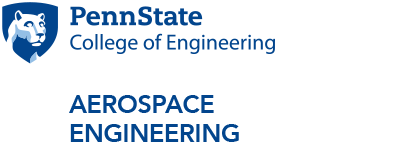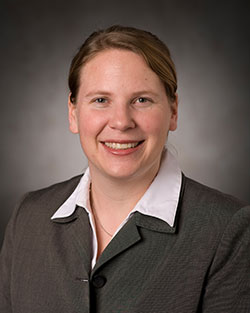Time and (wind) energy well spent
Susan Stewart talks innovating online education
11/22/2016
Engineering Penn State sat down with Susan Stewart, senior research associate and associate professor of aerospace engineering, to shoot the breeze about her innovative and successful teaching methods for the online graduate certificate in Wind Energy.
Engineering Penn State: Obviously, teaching online classes is different than standing in front of a classroom of students. What’s the biggest difference for you?
Susan Stewart: The interaction takes a different form. With online courses, you generally don’t have the opportunity to have live, in-person conversations with your students as you would in a classroom.
EPS: So you lose an important part of the educational process?
SS: I’ve found it’s quite the opposite and is more of an active learning environment that many students seem to prefer and benefit from. Sitting in a lecture, you have one shot at taking in the information. You can get lost quickly and find it hard to catch up. With the online learning format I use, students can review content as many times as they need and pace themselves in a way that adapts to their own learning style.
EPS: How is your format different than a live lecture or one that is recorded and viewed or streamed live?
SS: My goal has always been to provide a highly interactive learning environment that integrates multiple components. From anticipatory questions that get them thinking before they get into the main content, to equations they have to solve, screencast demonstrations, and short YouTube videos, I try and motivate the students to want to understand how to do things themselves versus me telling them how or giving them step-by-step solutions. Thus, the students should be active participants in the lessons.
EPS: With an online course, students aren’t able to have face-to-face interactions. Do you provide any way for them to engage with each other?
SS: I do, because I believe they can learn from each other as much as they can learn from me or any instructor. I incorporate discussion forums into the program, and it has become one of the most important elements. During the forum, I may post a question or ask them to find and summarize an article, but then I require them to respond to each other. Sometimes there are also assignments which require discussion in terms of making appropriate assumptions about how to approach the problem. These assignments are structured intentionally to encourage students to communicate with each other. It’s no different than what happens in the working world—you’re not always the expert or have the answer, so you have to dig for it.
EPS: Do you incorporate any “real world” elements into the courses?
SS: More recently, I integrated several industry-derived case studies to provide more project-based learning and give students the opportunity to interact with wind industry personnel. Using Adobe Connect, I set up webinars with company representatives that allowed the students to discuss how to handle real-world scenarios that were relevant to their assignments. It taught them how to use their own professional judgment in approaching problems.
EPS: What does the future of this program look like? Will you add any new components?
SS: The wind energy industry is constantly evolving, so it’s important to me to keep the material fresh and relevant. We get students from diverse backgrounds, so having more content variety, especially with the case studies and demonstration videos will be a priority. I also think there is the potential to collaborate with other universities that are part of the North American Wind Energy Academy to offer additional courses or content.




